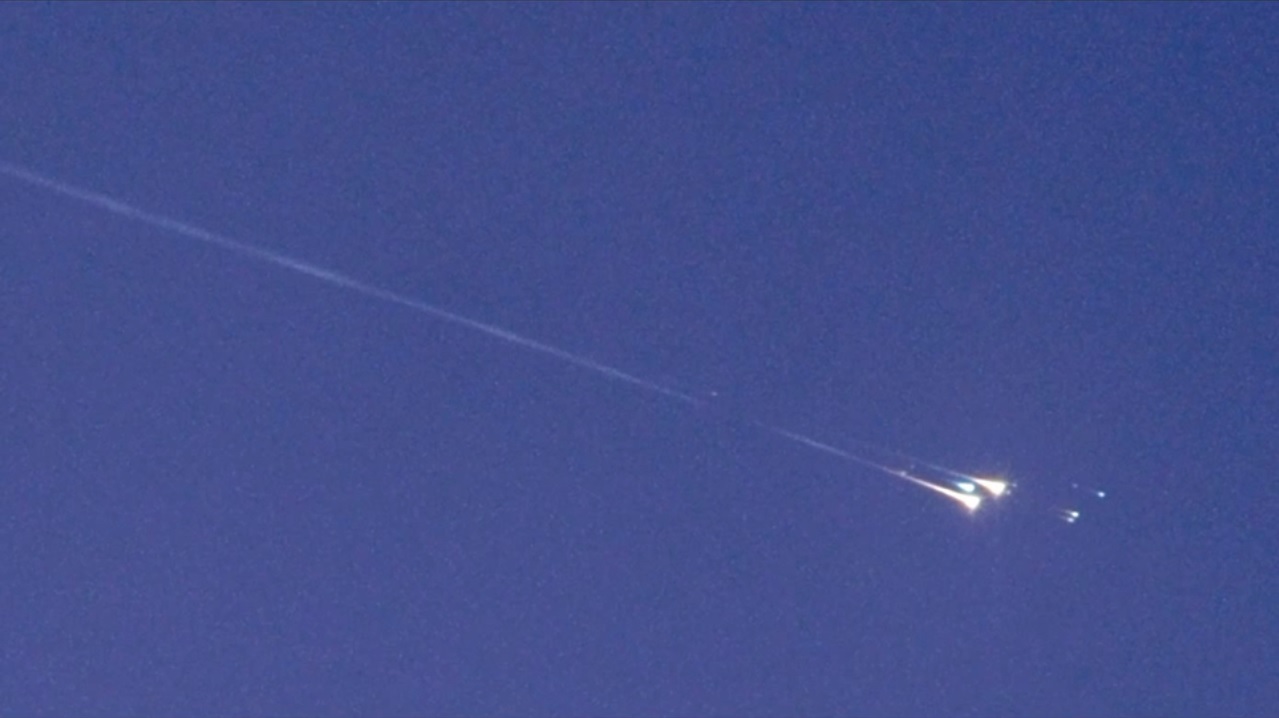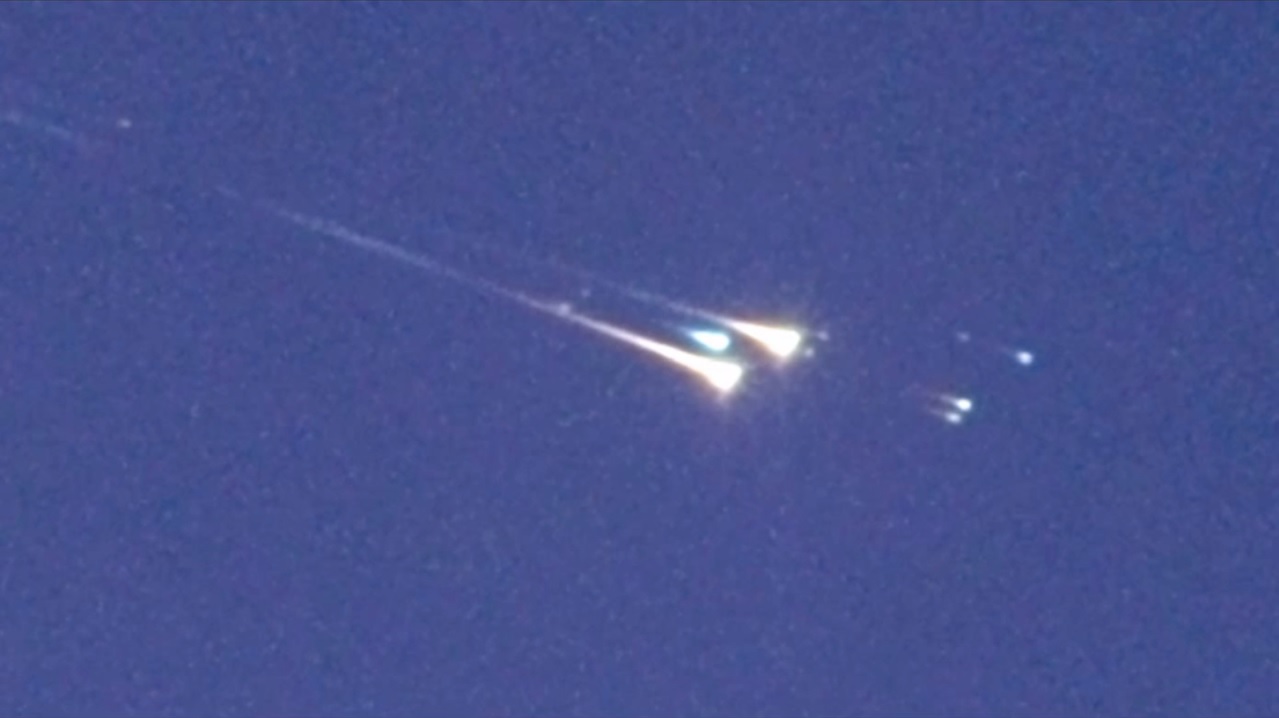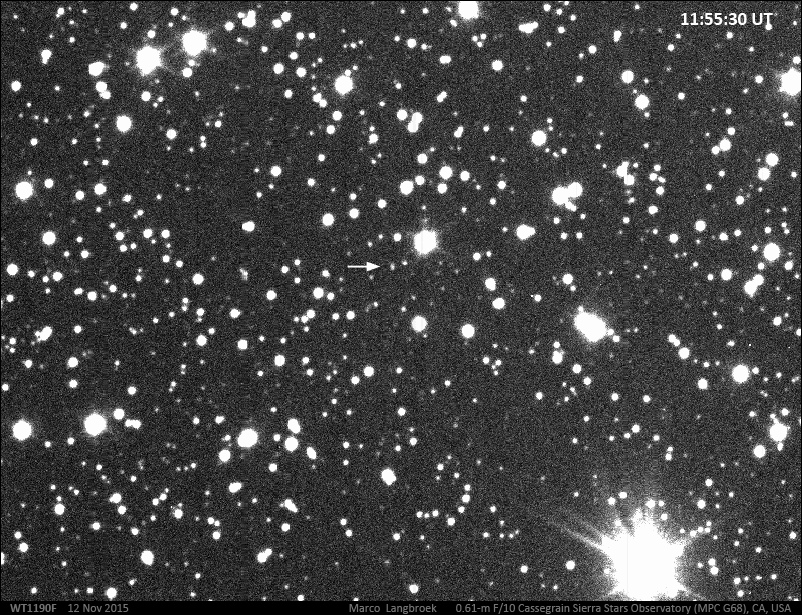'WTF' Space Junk Meets Fiery Demise as Scientists Watch

The mysterious space junk WT1190F fell from the sky this morning, and scientists had a flying, ringside seat as the object burned up in multicolored fireballs.
A new video of the falling WT1190F shows the first observations taken by a worldwide collaboration of researchers watching from a Gulfstream 450 business jet as the object returned to Earth to meet its fiery doom.
European Space Agency officials suggest the debris is likely from an old rocket mission, and the science team's analysis should help reveal the space junk's ultimate origin.
The object re-entered the atmosphere around 1:19 a.m. EST (0619 GMT), midday off the coast of Sri Lanka where the pieces came down. Although it glowed brightly enough to appear in the daytime sky, earthbound viewers were out of luck: A cloudy sky blocked most of the show. Luckily, the flying researchers were able to measure with a variety of cameras and instruments as the approximately 3-foot (1 meter) object burned up in the atmosphere.

Researchers discussed the newest images on a Slooh Community Observatory webcast this morning, where noted fireball expert Mark Boslough, from Sandia National Laboratories in New Mexico, discussed the junk's probable origin based on its unusual, highly elliptical orbit around Earth with Slooh host Paul Cox.
"There aren't that many things we launch into orbits that would take them beyond the moon, so it's most likely a piece of a lunar mission," Boslough said in a webcast. He added that it could potentially be part of a rocket or fuel tank from the Apollo missions in the 1960s.

Slooh said that the junk fell at 24,600 mph (39,600 km/h), which is why the glow was so bright despite the small size as the object broke up.
Get the Space.com Newsletter
Breaking space news, the latest updates on rocket launches, skywatching events and more!
"Every kilogram [2.2 lbs.] of material has about the same amount of energy as 10 kilograms [22 lbs.] of high explosives when it's moving that fast," Boslough said.
The flying observations came from the Next TC3 Consortium Asteroid Detection and Early Warning Team (referring to 2008 TC3, the first asteroid to hit Earth that was spotted in advance). As the high-quality video, spectroscopic readings and other measurements come back, more about the space junk's source should become clear, researchers agreed — and the observations will also feed models of debris re-entry and help refine tracking methods that could be used on future incoming objects and asteroids.
Discover more about this exciting research program here: SETI Institute IMPACT
Email Sarah Lewin at slewin@space.com or follow her @SarahExplains. Follow us @Spacedotcom, Facebook and Google+. Original article on Space.com.
Join our Space Forums to keep talking space on the latest missions, night sky and more! And if you have a news tip, correction or comment, let us know at: community@space.com.

Sarah Lewin started writing for Space.com in June of 2015 as a Staff Writer and became Associate Editor in 2019 . Her work has been featured by Scientific American, IEEE Spectrum, Quanta Magazine, Wired, The Scientist, Science Friday and WGBH's Inside NOVA. Sarah has an MA from NYU's Science, Health and Environmental Reporting Program and an AB in mathematics from Brown University. When not writing, reading or thinking about space, Sarah enjoys musical theatre and mathematical papercraft. She is currently Assistant News Editor at Scientific American. You can follow her on Twitter @SarahExplains.
